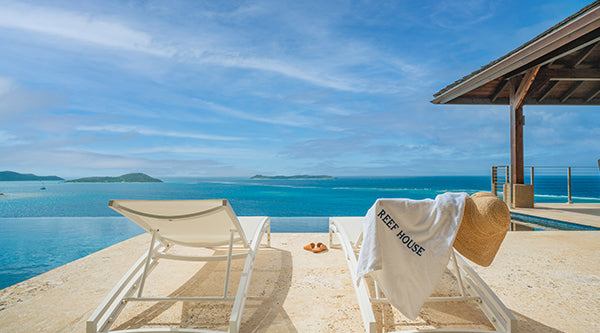Article: Island Hopping

Island Hopping
Explore A Trifecta of Less-Explored Mediterranean Islands

Sicily, Sardinia, and Corsica. Each one lives just within range of each other and, while they are massive in size compared to distant neighbors such as Mallorca, these three islands tend to get overlooked by travelers for ones with bigger names. However, being overlooked does have its benefits. These islands are more unspoiled than others, yet have just as much beauty and charm as their more famous counterparts. The terrain of each varies greatly–Sicily is volcanic, while Corsica and Sardinia are mountainous–but they all share one thing: arich, layered culture surrounded by enchanting, crystal clear waters.
SICILY


“To have seen Italy without having seen Sicily is not to have seen Italy at all, for Sicily is the clue to everything,” said the famed German novelist Johann Wolfgang Von Goethe. What Goethe was saying so keenly and succinctly is that this massive island in the Mediterranean (the largest island in the Med, in fact) is a treasure trove of unexplored gems and limitless beauty. Through its legacy, history, and isolation it has carved an identity for itself as the gateway to the history of the region.

While Sicily is ever an Italian island, it has a distinct Sicilian identity - a unique personality that can be created only by living an isolated island existence at the geographic crossroads of the Mediterranean. It is known for its volcanic lands including the active volcano for which it is famous, Mt. Etna, as well as its unique towns which each possess their own singular identities. Taormina is known for luxury and jetset, Palermo is the historic capital city, Noto is a preserved Baroque town, and Scala dei Turchi is known for its limestone cliffs and turquoise waters. Surrounding the main island are smaller islands, such as the Aeolians, which are known for the smalltown splendor of places such as Lipari. There is also the exclusive island of Pantelleria on the southwest corner of Sicily where European aristocrats go to enjoy a laid back summer holiday in total privacy.

Because Sicily holds the footprints of such a diverse array of cultures –Sicily is very close to Northern Africa and Greece–it means the things to do, see, and eat in Sicily are never just Italian. Take Sicilian cuisine for example, which has Spanish, French, and Arab influences. There are also memorable Greek ruins to be found in Sicily, such as the Greek Theater in Taormina.

This is an immense island with so much texture and nuance that you need at least a week to see it, two weeks to explore it, and a month to truly understand it. Although, once Sicily is experienced, its rustic magic and diverse identity will stick in your soul for eternity, and it will be easy to understand why Goethe declared it to be the clue to everything.

SARDINIA

Another Italian island, Sardinia, is famous for its clear and pristine waters and the dramatic coasts which enrapture visitors time and again. Its Emerald Coast is loved for the clear green waters for which it is named, and also the vibrant nightlife in places like Puerto Cervo. Given that Sardina is flat, dry, and rocky, many have said the landscape resembles the topography of Southern California, although Sardinia is far more sophisticated and also boasts superior beaches. Because of this terrain, Sardinia’s coasts have a plethora of coves, inlets, and untamed shores just waiting to be discovered.

Its cuisine is similar to Sicily in that it is undefinable. Each small town or city has their own culinary traditions, which may be fish- or meat-based (meat dishes seem to be the dominant specialty), or local kinds of pasta. This all lends to an exciting gastronomic trip around the island in search of delicacies not found elsewhere in the world - and the best pecorino cheese on the planet.

As Sardinian transportation systems are rather undeveloped–trains are not well-connected and schedules tend to be unreliable–it’s advisable to rent a car in order to get around the island. This has its benefits because, by car, the island can be experienced in the sort of firsthand way that allows for indulgence into its landscape at every turn.

CORSICA

Only a ferry ride from the northern tip of Sardinia but technically still a part of France is the island of rugged beauty, Corsica. This unique island is a collection of spectacular beaches, rustic villages, picturesque mountains, sharp cliffs, and a smattering of glitterati life. Its shores rival the coasts of the South of France in terms of quality–the sands on Corsica’s beaches are notoriously fine and its waters a shade of deep turquoise–although the atmosphere in Corsica is far more low-key than its Côte d’Azur neighbors. It’s also not as built up as Sardinia or Sicily with a distinct absence of massive hotels and resorts.

Corsica has a very unique cultural vibe in that, while it’s remained a part of France since the late 1700s, it has retained Italian culture in its bones, best seen through the speaking of both French and the local dialect-a form of Italian Tuscan language.

While its sleepy, picturesque towns and cross-cultural gastronomy are highlights of any Corsican trip, a trip to Corsica is also a truly deep indulgence into nature. This island is rife with secret beaches and outlying islands with world-class reefs. It is home to a UNESCO World Heritage Site and an abundance of rivers, mountains, and lush, green landscapes, all of which means a trip to Corsica will surely be spent exploring its waters and lands.

